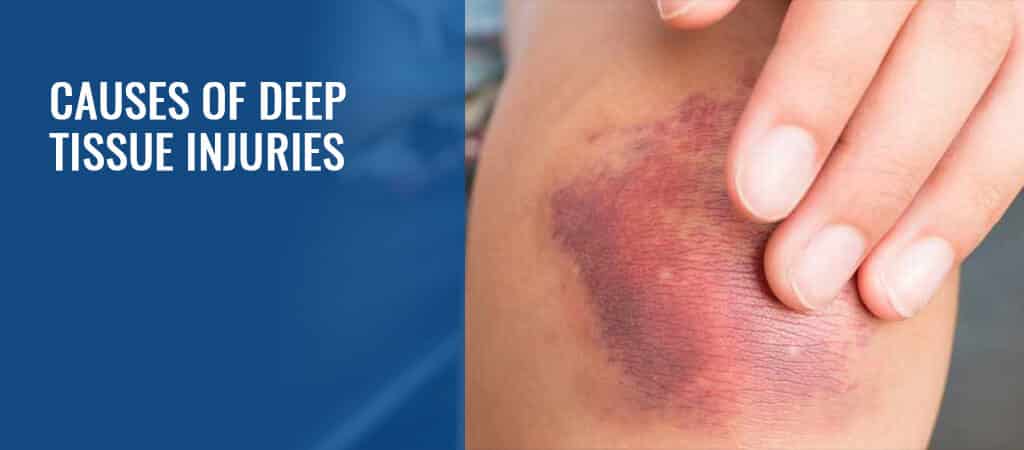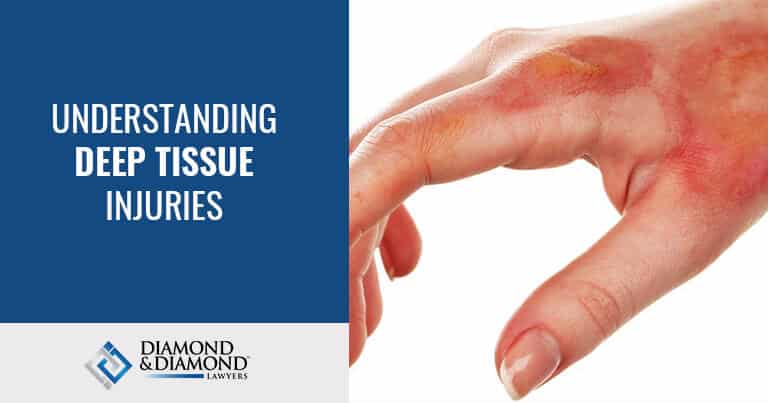Have you recently suffered from a deep tissue injury? If so, there are many important questions that need to be answered on your behalf and you need to consult with an experienced therapist to ensure that you have a treatment program designed to minimize your pain and give you the best possible chance towards a full recovery. Understanding deep tissue injuries is not necessarily easy, which is why our therapists work with you hand in hand to ensure that you have a comprehensive treatment program required to improve your quality of life.
A deep tissue injury lawyer could also be a valuable resource for you when you are critically injured in an accident. A deep tissue injury lawyer will argue on your behalf to fight for the compensation you need to pay for these devastating injuries. Deep tissue injuries are those injuries to the soft tissue under the skin as a result of pressure and they typically occur over a bony prominence. These can also describe a specific type of pressure ulcer.
Many deep tissue injuries start out as bruises often after slip and fall accidents but many will also go unnoticed by patients primarily because they often develop several days after an accident. In some cases a deep tissue injury can even be mistaken for a pressure sore.
Causes of Deep Tissue Injuries

Being critically injured in an accident should prompt you to get medical attention as soon as possible. During this medical appointment, you might discover that you have sustained a deep tissue injury, among other kinds of medical conditions.
A deep tissue injury lawyer might be required in order to fight for the compensation you will need to pay for these medical expenses and years of care.
The cause of a deep tissue injury is often direct pressure applied to the skin and the soft tissue with resulting ischemia. That refers to not enough oxygen due to restricted blood flow. A deep tissue injury can also be described as a muscle injury associated with poor nutrient delivery to the arterials and injury to the fascia, which is a tissue that surrounds the muscles, bones, blood vessels and nerves, or torsion of perforating vessels.
Situations and Conditions that Often Lead to Deep Tissue Injury
More often than not a person has sustained a deep tissue injury as a result of an unexpected accident. This can include a spinal cord injury, immobility, diabetes, atherosclerosis, anemia, fever, obesity, urinary or fecal incontinence, infection, poor nutrition, dehydration, hypoxemia, neurological disease or neuropathy.
If you’ve been hurt in an accident, the sudden impact of that issue can cause critical deep tissue problems and pain. It is not always easy to diagnose these concerns right away, so if you notice changes in your condition following something like an accident, make sure to tell your doctor.
Detecting Deep Tissue Injuries
A medical professional should always be engaged to determine whether or not you will have a serious deep tissue injury. The first sign is appearance which is noted by an obvious discoloration in the affected area. Pain is also commonly experienced in the affected area either prevalent on its own or when touched or pressed. Difference in consistency is another sign of a deep tissue injury. The affected area can either firmer or boggier compared to healthy or normal consistency in the body. Difference in temperature is another sign of a deep tissue injury. A deep tissue injury is usually warmer or cooler compared to more healthy or normal tissue.
Complications of Deep Tissue Injuries
There are some serious complications associated with an untreated or severe deep tissue injury. This can include infection, which is widely considered as the most common complication of deep tissue injuries, osteomyelitis, which can cause if the injury is left untreated or if the underlying bone develops an infection. Finally, sinus tracts can lead to tunnel shaped wounds that are superficial or connect directly to other deeper parts of the affected areas.
The sooner that you begin to experience symptoms around your deep tissue pain, you need to be proactive about your treatment options and management of that condition. If these issues are left without treatment, you could experience further problems and not be able to fully recover, so it is always in your best interest to get treatment for your concerns sooner rather than later.
Our personal injury lawyers have known many people who have suffered from deep tissue injuries who filed injury claims in an effort to recover compensation.
Talk to a Deep Tissue Injury Lawyer at Diamond & Diamond Today
If you have sustained a deep tissue injury as a result of a serious accident, our personal injury lawyers have extensive experience in dealing with deep tissue injuries. You can visit our website or use our online contact form or schedule your free consultation by calling our 1-800 number. Any of our deep tissue injury offices throughout Ontario can assist you.














